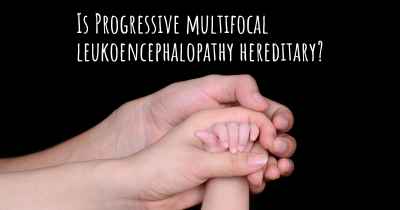Which are the symptoms of Progressive multifocal leukoencephalopathy?
See the worst symptoms of affected by Progressive multifocal leukoencephalopathy here

Symptoms of Progressive Multifocal Leukoencephalopathy (PML)
Progressive multifocal leukoencephalopathy (PML) is a rare and potentially life-threatening viral infection that affects the central nervous system. It is caused by the JC virus, which is a common virus that is usually harmless in healthy individuals. However, in people with weakened immune systems, such as those with HIV/AIDS or those taking certain immunosuppressive medications, the JC virus can cause PML.
PML primarily affects the white matter of the brain, leading to the destruction of myelin, the protective covering of nerve fibers. As a result, the transmission of nerve signals is disrupted, leading to a wide range of neurological symptoms. The onset and progression of PML can vary from person to person, but there are some common symptoms that may indicate the presence of the disease.
1. Neurological Symptoms
The most common initial symptoms of PML are neurological in nature. These symptoms may include:
- Weakness: Progressive weakness in one or more limbs, often affecting one side of the body more than the other.
- Difficulty with coordination: Problems with balance, stumbling, and unsteady gait.
- Changes in vision: Blurred vision, loss of visual acuity, or visual field defects.
- Cognitive changes: Memory problems, confusion, difficulty concentrating, and impaired judgment.
- Speech difficulties: Slurred speech, difficulty finding words, or problems with articulation.
- Seizures: In some cases, PML can cause seizures, which are sudden, uncontrolled electrical disturbances in the brain.
2. Sensory Symptoms
PML can also affect sensory functions, leading to various symptoms such as:
- Numbness or tingling: Sensations of numbness, tingling, or "pins and needles" in the limbs or other parts of the body.
- Loss of sensation: Reduced ability to feel touch, temperature, or pain.
3. Visual Symptoms
Visual symptoms are common in PML and may include:
- Blurred vision: Loss of sharpness or clarity of vision.
- Visual field defects: Loss of vision in specific areas of the visual field.
- Double vision: Seeing two images of a single object.
4. Behavioral and Mood Changes
PML can also affect a person's behavior and mood, leading to:
- Depression: Persistent feelings of sadness, hopelessness, and loss of interest in activities.
- Personality changes: Alterations in behavior, such as increased irritability, apathy, or social withdrawal.
- Emotional instability: Rapid mood swings, exaggerated emotional responses, or inappropriate emotional reactions.
5. Other Symptoms
In addition to the above symptoms, PML can also cause:
- Headache: Persistent or severe headaches that may be accompanied by other symptoms.
- Fever: Low-grade fever or high fever, depending on the severity of the infection.
- Generalized weakness: A feeling of overall weakness and fatigue.
- Loss of appetite: Reduced desire to eat or a significant decrease in food intake.
It is important to note that the symptoms of PML can mimic those of other neurological conditions, making it challenging to diagnose. If any of the above symptoms are present, especially in individuals with weakened immune systems, it is crucial to seek medical attention promptly. Early diagnosis and treatment can significantly improve outcomes for individuals with PML.
Posted Mar 4, 2017 by Jennifer 100








